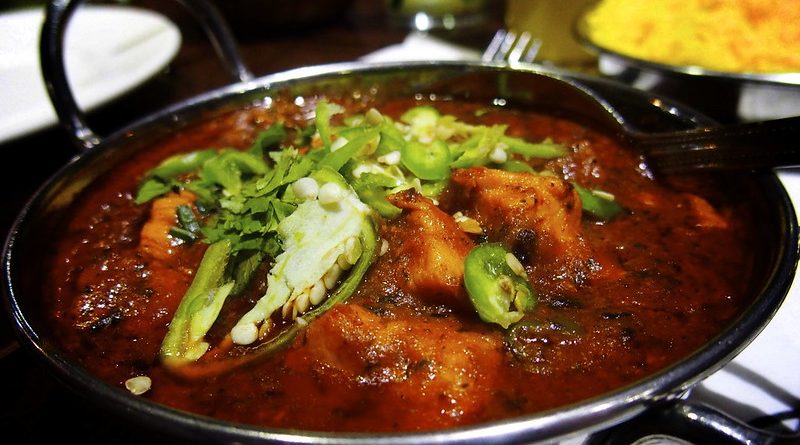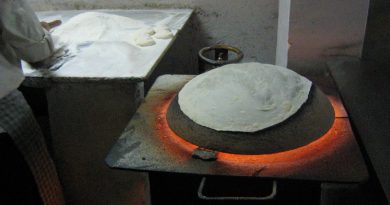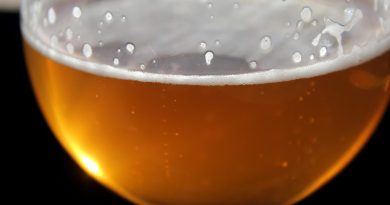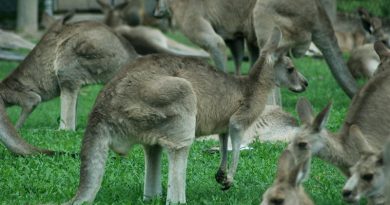From Baltistan to Birmingham: Balti Culture
Food Facts
Where: Birmingham, England, originally from Baltistan in Pakistan’s Northern Territories
Tastes: A fresh one pot stir fry with many spicy, fruity or creamy sauce variations
Best Dish: Chicken Tikka Massala served with a Naan Bread
Serving Suggestion: Eaten after 11pm, bring your own beer, start with lots of zesty poppadoms and serve with a honey and almond bread
Britain is not known for its high quality national cuisine. Soggy pukka pies, greasy chips, bland white fish lathered in fatty batter and lumpy gravy are synonymous with the incongruous juxtaposition of ‘England’ and ‘food’. But, whilst the Brits try and climb out of their ill repute as the worst cuisine in Europe, another kind of cuisine has being slowly creeping out of the closet from altogether more exotic roots. The Balti is more Birmingham than Pakistan, a strange hybrid of East meets West cuisine that takes its inspiration from the ancient Moghuls and adapts it to the dynamics of a Midlands city on the wrong side of midnight. Welcome to the bizarre world of British Balti Culture.
Origins of the balti
Balti cuisine originates from the Northern Pakistan region of Baltistan, once a kingdom with its own royal family high in the harsh and cold Karakoram Mountains. One of the most remote regions in Asia, Balti folk are surprisingly welcoming. Once nomadic people who carried little in the way of cooking utensils, the Baltis developed a cooking technique that was quick, simple and involved just one small pot. ‘Balti’ translates literally as cooking bucket, and the balti dish, known as a karai, is a two handled pan like a small, shallow wok in which the dish is both cooked and served. Controversially, some believe that the term ‘balti’ is an insult in Hindi, coined to degrade the British larger louts by making them eat ‘out of a bucket’ – the last laugh being on the restauranters.
What’s hot in the balti bucket
Influenced by the neighbouring cuisines of India, China, Iran and Afghanistan, Balti cooking is literally a ‘hot’ pot of Central Asian food cultures. Traditionally, Lamb, goat or prawns are the main meat although in the west chicken is favoured and vegetarian variants abound. The cooking style is quick, like a stir fry, and assembled straight in the pot, thereby retaining the freshness of the ingredients and the heat. The exotic aromatic spices of the ancient Moghul traders have found their way into the dishes which are traditionally eaten with the right hand only, but more conventionally in the west the stew is eaten with an unleavened naan bread (peshwari – stuffed with honey, raisin and almonds or Keema – stuffed with meat are delicious vairants) or aromatic basmati rice.
From mountains to the Midlands
The Balti in the 21st century is more about Birmingham than Baltistan. During the 1950’s – 70’s, thousands of Pakistani immigrants arrived in Britain and formed a community in the industrial 2nd city of England, Birmingham. They brought with them the unique Balti cuisine and pretty soon their cheap cafes selling traditional fayre sprung up all over the poorer parts of Birmingham like Sparkhill, Moseley and Sparkbrook. They soon became a hit with Pakistani families, students and locals alike, typically characterised with a menu trapped underneath a wipe free clean glass table top. This area expanded and is now known as ‘the balti belt’ or ‘the balti triangle’. On long streets within Ladypool Road, Stratford Road and Moseley Road nearly every other shop is a balti house, their lurid neon signs and cheap and bountiful menu (typically costing around $6 US for a main dish) and offers to bring in your own drink will mean no visitor to this fair city need go hungry.
Quality varies so it’s worth asking around or studying the menu before you make a decision. Starters include onion bhanji (friend spicy battered giant onion balls), samosa (curried meat or veg in pastry parcels) and usually a few poppadoms and yoghurt or spicy dips and salad are generously thrown in for free. If you’re not already stuff, the meal is finished with a kulfi, a spicy Indian ice cream.
Balti fever takes over Britain
Word quickly spread of the wonders of the Balti from the centre of England, the balti soon became hot stuff with many cities with Asian communities building up collections of curry and balti houses, the most infamous outside of Birmingham being Rusholme in Manchester and Brick Lane in East London where going out for a ‘Ruby Murray’ (curry) is part of the typical Friday night drinking and dining mix. Although collectively known as ‘Indians’ they more likely to be owned by Pakistani or Bangladeshi first or second generation immigrants who will serve a mix of cuisines from the region including pork, Indian beer, and other non-authentic ingredients. The curry is a fine example of how multi-cultural British society is, particularly in its foods, where authenticity is dumbed down in the creation of a ‘one size fits all’ variant of Asian cuisines.
Indians are as commonplace in the UK as Mexican restaurants are in California. Now most curry houses in the UK offer Balti cuisine, the traditional chicken tikka massala is the No. 1 dish of choice for Brits – toppling traditional British cuisine like Sunday Roast or Fish n’ chips in popularity. A lot of Indian food pundits who shunned the lowly British Balti have now made an about turn in the face of its popularity throughout Western Europe and Indian restaurants are the most commonplace and popular in the country. The Balti restaurant has taken on and conquered the popularity of Tandoori restaurants. Long gone are the menus steamed underneath glass tabletops and quality service and diversity of dishes means that Britain is still the place to try the most innovative and delicious food outside of the Indian subcontinent.
But the curry is not merely a means of sustenance whilst in Britain – curry has become initiated as part of a wider youth culture. A good night out drinking is almost invariably topped off with a curry – with lads competing as to who will dare to take on the ultra strong vindaloo, ‘loo’ being the operative word as the next day caressing the armitage shanks is a likely outcome. To the dismay of restaurant owners, many of whom are used to frequent drunken racist taunts from their customers, curry culture was invariably never taken seriously. However, as Britain becomes yet more multicultural, Indian food is starting to be noticed again with the Tamarind restaurant in London’s Mayfair becoming the first michelin starred Indian restaurant. The curry experience is wholly and quintessentially English and nothing like what you would find back home in Pakistan.
Trying a balti in Birmingham
The beauty of the balti is its simplicity of design but yet its infinite variety, with its range of influences from Kashmir aromatic spices, moghul emperors dining feats to ‘winter foods’ of the highest mountains. Authentically, a good balti is dry, oily and spicy but in Birmingham what would have been vegetarian dishes in Baltistan have been augmented with a kaleidoscope of variants indigenous to Birmingham – like the novelty ‘blue balti’ celebrating the Birmingham City Football Club and tropical meats like crocodile tipping a scale into the pot. All tastes are catered for from the novice to the serious curry-holic – from sweet and mild to hot cistern inducing. Why not try a banana and cream balti or the Balti Chicken Malaya with pineapple, lentils and cherries as a bizarre main course come pudding, or perhaps a less appetitizing boiled egg balti.
If you can’t see the variation you want just ask and most restaurants are happy to cater for individual tastes. The unique balti spices include garlic, ginger, coriander, chilli, clove, cassia bark, lovage, methi, aniseed, fennel, cumin and garam massala. Vegetable are often weird and wonderful, including peas, tomatoes and aubergine, spinach, chick peas, ladies fingers (okra) and paneer cheese and potatoes are common in starters. In fact, the balti is seen as a veritable pantry raid in which any leftover can be successfully ‘baltied’ into the pot mix. Why not try for the adventurous a ‘Balti Tropical’ combining meat, chicken and prawns together or an ‘Exhausting Balti Dish’ whose epitaph is that ‘it will exhaust you eating it’.
Freshness of the ingredients and preparation is what makes an exceptional balti over the everyday street variant. The sauces are prepared beforehand and added after the stir fry. This makes Balti a perfect way to approach Indian cooking from the west as there is no need to spend hours sautéing, steaming and simmering – a balti can be made at home in a matter of minutes.
But when in Birmingham, why cook at home when the streets are a microcosm of the Indian subcontinent foodie empire.
Not only will you be treated to a meeting with the lively Pakistani community of Birmingham but a trip to the city will encounter other colourful locals in the form of the ‘brummies’, some of the most good natured citizens in all the United Kingdom, although American tourists are unlikely to understand their curious indigenous Black Country accent, language and customs. To get you started:
“Awwl-write – yowse fancy a bawltie?” (Trans: Hello, would you like to go out for a curry tonight?)
“Nowww babs, I’m off ta’ Bull Ring.” (Tans: No, fine friend, I’m going to the Bull Ring Market (Britain’s first shopping mall dating from the 1960’s))
Other things to see and do in Birmingham
Birmingham still has something of a bad press amongst Brits as being the grim industrial centre of England. Lonely Planet describe it as a ‘rather dreary city’ little worth spending more than a few hours in. Not so! Birmingham is a thriving cultural and historic centre which you could happily loose yourself in for many days. Why not:
– Visit some of Birmingham’s great range of museums and art galleries including the Science Museum in Aston Park and the Ikon Gallery off Broad Street.
– Go shopping – Birmingham has a great range of high street shops as well as the famous Bull Ring Market for foods and Rag Market for second hand clothes. In Birmingham, retro is cool, this is the home of mod rockers Ocean Colour Scene as well as the Brum Beat movement of the 1960’s with the likes of the Moody Blues. Check out the hip arty suburb of Moseley where flares have never gone out of fashion. Did we mention Birmingham’s own enfant terrible Ozzy Osbourne?
– Annually in September, the Arts Council hold a 3 day free festival called ‘Arts Fest‘ in which the many cultural aspects of the city are celebrated around the city, from lo-fi electronic music to fringe theatre and Kathakali Indian Dance.
– Check out Birmingham wonderful network of traditional canals, offering great opportunities for strolls as well as boat trips. Traditional pubs exist around the canals which weaves straight through the city and the canal side links on to the entertainment region of Broad Street where a conference hall, symphony hall and theatre as well as other swish cocktail bars and international restaurants are situated.
Other things to see and do in Baltistan
– Climb the mighty K2, the 2nd largest mountain in the world, nestled amongst dense glaciers offering some of the most startling landscapes for trekking in the world in the Karakoram Mountains and highway, how of 10 of the world’s top 30 highest mountains.
– Study the classical Tibetan language with the masters of Chitral in the region known as ‘little Tibet’.
– In the second week of August, visit the major Baltistan town of Skardu for the famous Polo Festival celebrating Pakistan’s Independence Day.
– During the summer months of June – September, the icy plains of Deosai are accessible for trekking and a plethora of amazing wildlife can be seen here like the Himalayan brown bears, the endangered snow leopard, golden marmots and the snow trout.
MORE INFORMATION
Restaurants
Al Frash
An award winning and ever popular Balti Restaurant with a great selection of meat and vegetarian dishes. Their website contains plenty of recipes for you to try at home.
186 Ladypool Road
Sparkbrook
Birmingham B12 8JS
Tel: + 44 121 753 3120
Websites
The Balti Guide
A complete unbiased guide to Indian Cuisine in the Birmingham area and full Indian Restaurant listing to give you a helping hand in choosing where to eat out next.
The Balti Page
Links to just about every curry resource you could ever want.
Be In Birmingham
Guide to business and tourism in England’s second city
Books
The Balti Curry cookbook – Pat Chapman(1998 Piatkus Books)
Order this book from Amaon.com
By Susi O’Neill




